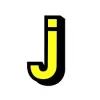Take a look inside 6 images
The Juice
Pros: Articles are available in a range of reading levels and include extra enrichment content to help guide students toward deeper learning.
Cons: Assessment is limited to multiple-choice questions, and staff-written articles don't promote general media literacy.
Bottom Line: These sortable collections of news stories, infographics, and videos can provide a daily dose of current events.
The Juice's daily collections could easily be a good fit for a social studies or English class. The articles are short, which makes them a pretty quick read. If it's too much to check in every day, teachers could make it a weekly assignment, and choose a particular collection that best matches what they're covering that week. Multiple-choice questions offer some minimal assessment, and teachers will certainly want to keep track of how their students score on those quizzes. But to really deepen the experience and gauge learning, teachers will want to supplement with other activities. Have students pick an article to research and report back to the class, assign different collections to different students (or groups of students) and ask them to summarize the news for the rest of the class, or use an article as a springboard for launching a unit -- for example, supply-side economics, climate change, or world political systems. Don't forget to talk to your students about media literacy, especially since the articles are summaries written for the site without links to actual news sources. Discuss the role of bias in news reporting, the importance of knowing your sources when evaluating a story, and ways to think critically about what you read. Check out our News and Media Literacy Toolkit for resources that can help.
The Juice is a subscription-based website where students can read short news stories written specifically for their grade level. The site is "fed" by the News and News site, though articles aren't taken directly from news sources but written in-house. Content is released every day through The Daily Juice, a small collection of news articles plus one STEAM or life-hack-related video. Each article is 200–300 words long and ends with a multiple-choice question that taps into the reader's comprehension of the article or its accompanying infographic. The article's authors are never named, but the developer claims that all content is created by educators and professional journalists. Teachers can share content through Google Classroom or a link. The homepage on a teacher account includes a data overview detailing class and student and learning standards addressed. Teachers can preview the content in the current day's The Daily Juice or browse collections from other days. They can also search for specific content by keyword, use category filters, or filter by content type like articles, videos, and infographics. Students access content through their own unique sign-in, initially connected to the teacher's account through a unique class code. Teachers choose a default reading level for each class, but they can also set a reading level for each individual student, choosing from Grades 5-6, 7-8, 9-10, and 11-12.
The Juice offers a good glimpse into current events wrapped up in easy-to-deliver packages. Though the actual content changes in each daily collection, there's usually a mix of stories, both domestic and international, that cover a variety of genres such as politics, science, economics, and health. And because news often addresses difficult issues, it's nice that each collection features a feel-good story highlighting something positive. Being able to choose from four reading levels helps make The Juice a good reading comprehension activity and lets teachers target the material to match their students' skill level. It's also nice that teachers can see what skills students practiced when answering multiple-choice questions. Also, including infographics, videos, and some background about topics helps The Juice stand out.
It would be nice to have easily accessible transparency around the original sources of the news articles, particularly if educators want to teach about media literacy and the importance of knowing where your information comes from. Another downside is that besides directing students to look up a particular day's news collection, it's not immediately apparent how well teachers can customize what articles they want their students to read. Though the developers claim that teachers can choose specific content, that option doesn't seem to be available anywhere. And more options around customizing content such as assessment questions would also boost the site's value.















